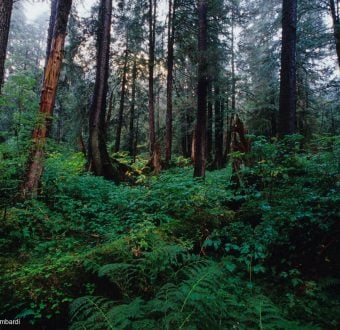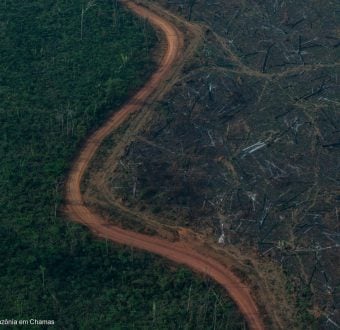The lawsuit claims the Forest Service grossly failed to consider the project’s impacts on deer, wolves, and salmon. It asks the court to vacate the agency’s decision to proceed with the project, including the project’s recently offered Diesel Timber Sale.
Much of Prince of Wales Island, including the Logjam area, has been heavily logged and roaded already. “The Forest Service has not honestly confronted the project’s impacts to deer and salmon,” said Carol Cairnes, President of the Tongass Conservation Society. “I explored these groves this fall, and the forest they want to cut is largely the buffers that have previously been left. Those buffers are a must for wildlife, both for habitat and as migration corridors. Without this old-growth, the deer have little shelter in the winter. Then the wolves are short on prey, and people are short on subsistence meat.”
Gabe Scott of Cascadia Wildlands said, “Salmon are more of an economic backbone than timber. Roads, especially badly maintained ones, are salmon killers. There are 25 of what they call ‘red culverts’-culverts that block salmon passage-that exclude 14 miles of upstream habitat in this specific project area. Rather than do the maintenance, they’re spending the money to build even more roads. And they’re $20 million in the hole already maintaining roads on Prince of Wales Island.”
The wolf subspecies here is the Alexander Archipelago wolf. It is genetically distinct and is unique to Southeast Alaska. Larry Edwards of Greenpeace said, “The region’s most important wolf population is put at risk by the Logjam project’s logging and road building. The project will both suppress the population of deer (the wolves’ primary prey) and increase the density of roads beyond acknowledged danger levels. The Forest Service avoided an honest appraisal of that in its EIS.”
The Logjam project has been particularly contentious. Last summer, several other environmental groups offered to compromise if the Forest Service would halve the project’s timber volume. Tongass Supervisor Forrest Cole instead chose one of the two alternatives that maximized timber volume . The plaintiffs in today’s case aren’t looking for a compromise. Scott said, “The project is ill-conceived, illegal, and should be cancelled.”
Edwards said, “The Forest Service has emphasized the importance of this project to the timber industry, but its only hope for justifying the project was to conceal or gloss over several substantial environmental impacts. The fact is, the old-growth in this place has been cut to the bone. There is no way to honestly justify the Logjam timber project, and in trying to push the project through anyway, the EIS had to violate the law. So here we are, at the end of the rope for an unsustainable industry.”
Scott added, “The Forest Service decided to approve the export of half the project’s timber volume, unprocessed, to the Lower-48 or Asia. Export is the only way the agency could force a positive timber value appraisal. The jobs from Logjam are minimal, yet the project will push the ecosystem to the brink.”
The groups are represented by attorneys from the Crag Law Center and Cascadia Wildlands.
VVPR info: Tongass Conservation Society: Carol Cairnes (907) 617-8908 Greenpeace: Larry Edwards (907) 738-1878 Cascadia Wildlands: Gabe Scott (907) 491-0856
Notes: IMAGES & FURTHER INFORMATION: http://www.greenpeace.org/logjam

